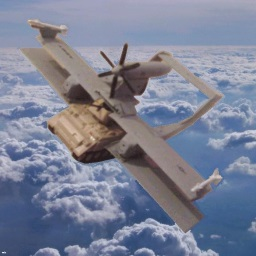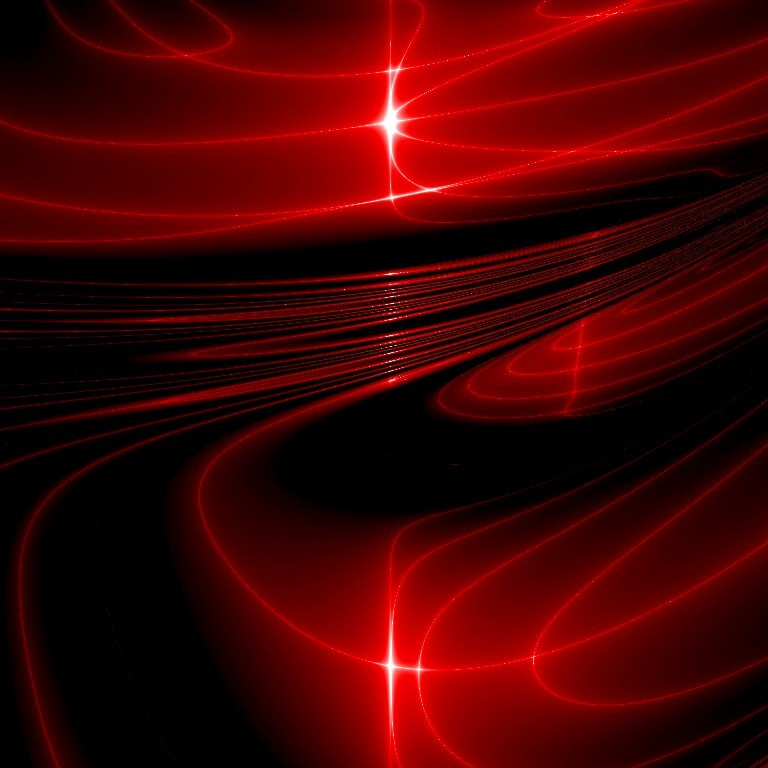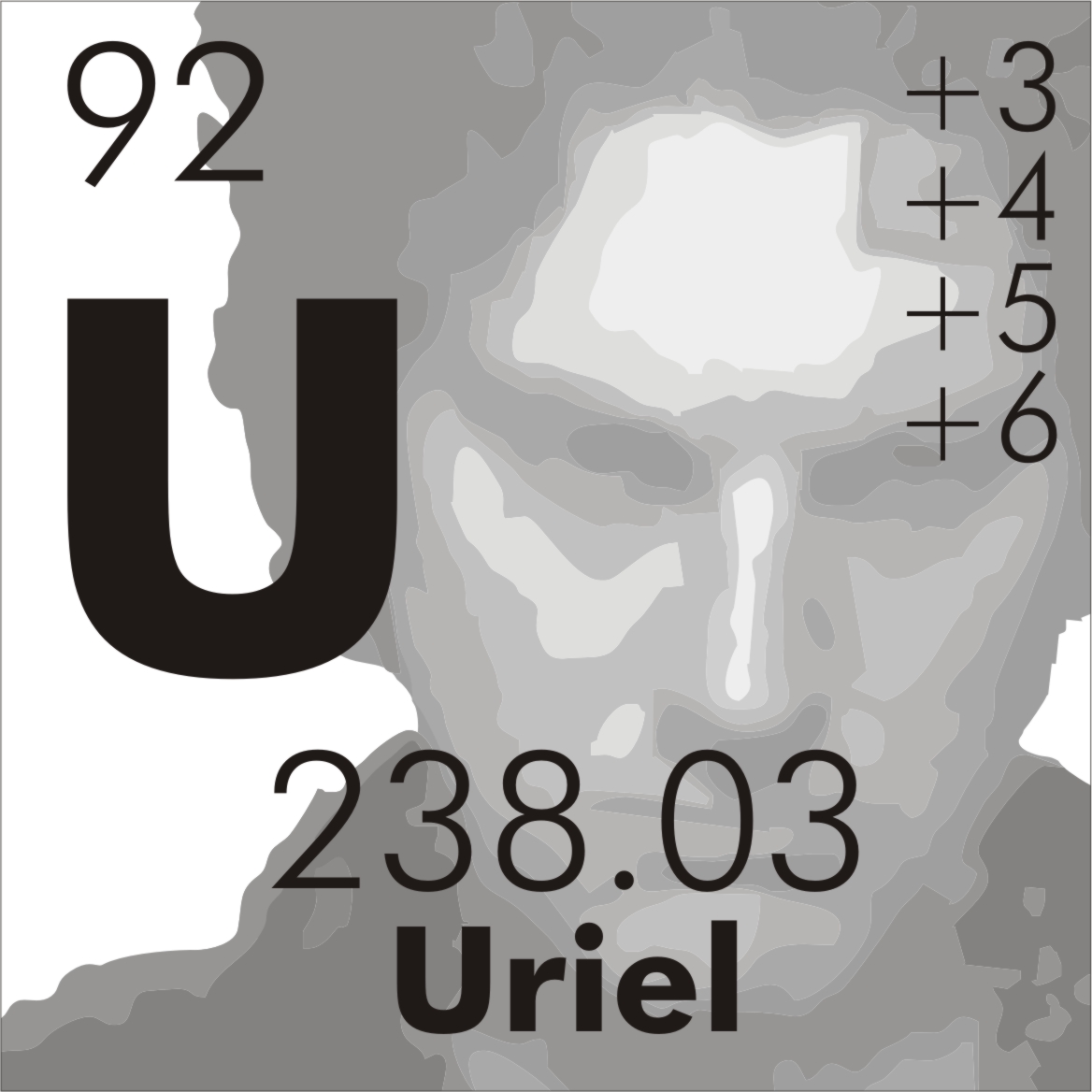tell my why this thing should not be able to melt satelites that cross over during the day

My scientific research of squinting at the poster says a spy satellite is probably about as long as a pickup truck which is probably about 20 feet long.
xkcd says space is 100 km away and I’m sure there’s nothing else I need to understand about that.
At 100 km away, the change of angle that will move your beam by 20 feet (enough to make the difference between hitting or not, if the thing and the flat mirror are both about 20 feet long I guess) is (20 feet / 100 km / pi) radians or 0.0000194 radians, meaning you raised or lowered one edge of the mirror by 0.004 inches or around the width of pretty-thick hair. I would be a little surprised if the mirrors even stayed within that tolerance just from flexing around in the wind for as big as they are.
On the other hand, you wouldn’t have to hit the spy satellite with every mirror; you could probably heat it up significantly just by hitting it with a bunch of the beams as they were swinging wildly around and mostly missing it. And if it was specifically a spy satellite, you could probably fry its optics with not really a lot of mirrors for not a long time actually managing to hit it.
On the other other hand the thing would be flying along at around 8 km/s, so you’d have to get your mirrors positioned accurately enough, and then start moving them at a relatively insane speed while still keeping their absolute positioning dead accurate when their motors and overall construction clearly weren’t designed for either of those tasks at the required level of precision.
TL;DR Let’s try it
and then start moving them at a relatively insane speed while still keeping their absolute positioning dead accurate when their motors and overall construction clearly weren’t designed for either of those tasks at the required level of precision.
That’s what they want you to think.
Props on your Internet math and research. It was a fun read.
Time to use adoptive optics?
You still have a crap-ton of atmosphere you have to get through, and the beams being reflected aren’t coherent. So the light reflected is subject to the inverse square law, which means that the energy diminishes as the inverse square of the distance. So the actually energy reaching the satellite would be minuscule. If you want to effectively use light to punch all the way through the atmosphere, you’ll need beam coherence.
The difference in the angles of the beams is the angle difference of a beam that came from an object 149,597,871 km away at a separation of 20 feet i.e. basically fuck-all. For this purpose I think they’re effectively (edit:
coherent) parallel. And I think the atmospheric reduction would be significant but not defeating-to-the-purpose; I mean the sunbeam on its way in still had plenty of effectiveness after getting through the same atmosphere. If you did it on a cloudy day or something then yeah it wouldn’t work at all.(Edit: Wait, I don’t understand optics; I mean parallel, not coherent. I don’t think coherence enters into it?)
The losses due to beam angle is nothing compared to the losses due to the inverse square law. This is why coherence is so critical for getting substantial quantity of photons from point A to point B. Lasers are defined by this difference, in that the light they produce is coherent. Because of this lasers are detraction limited, and have very low divergence at distance. Incoherent light sources like the sun have random amplitudes and phases in regards to time and space, so have very short coherence distances.
You could buy and build what this guy did, and probably get a few photons all the way through the atmosphere. The GEDI space laser fires with a power of 10mJ, and still results in a beam footprint of 25m. Granted the laser has to make a two way trip, but only a couple of hundred thousand photons are making it back to the sensor. So you would probably be able to see the glittering object using a high resolution camera, but there is no way that incoherent light could make any meaningful difference to something in space (considering, you know, its also being hit by radiation from the sun, you know radiation that hasn’t been filtered trough the atmosphere.)
Filtered through the atmosphere twice*
Inverse square law is negligible, it’s already traveled from the Sun to earth, from the earth back up is a fraction of what it’s already traveled.
Well no its not because its also been filtered via the atmosphere, then it got reflected off a mirror, now it has to make the trip again, and for all intents and purposes is incoherent.
Basically all of the energy reflecting from the mirror is lost before it hits the ISS.
The filtering the first time is marginal, same the second time.
The inverse square law is mathematically insignificant, why do you think you can still be blinded by a mirror? The source doesn’t become the mirror, the math is still calculated from the source, you need to account for the mirrors refraction in the calculation though.
It’s also thousands of sources, even at 1% (probably isn’t this low, but worst case here) is more than the direct energy hitting it from the sun.
Divergence and lack of coherence are two very different things (as I fully realized only after I typed up my message, I guess).
Divergence is a result of the angle. If you’re producing light from a local point-source, you have to work very very hard to make sure the angle of the departing rays is as close as you can make it, and you’re still not going to get anywhere even remotely close to 20 feet divided by 149,597,871 km. That’s where all the insane dropoff in the examples you’re talking about is coming from. The rays from the sun, though, are effectively parallel by the time they reach the earth to points 20 feet separated.
The inverse-square law is a result of the power in the beam spreading out over a larger area and spreading out its energy output over a wider area. It’s just a way of expressing that if the beam has spread itself out from hitting 1’x1’ into hitting 10’x10’ at a distance 10 times greater, each square foot of the target will now only get 1/100 of the energy. It won’t get weaker in total, without being absorbed by something along the way; that would violate conservation of energy. In this case the beams are parallel, the target is still 20’x20’ plus some tiny tiny fraction, there is a little bit of absorption by the atmosphere but not enough to make it not bright. The sun’s light goes through the atmosphere and it’s still bright (somewhat brighter if you’re on a mountain or in space, with a lot more UV, but not like night and day.)
I don’t see that coherence fits into this particular part of it in any way; as far as I know, we use lasers for this type of purpose because of their low divergence and the coherence has nothing to do with it. The rays originally from the sun have no coherence and they still manage to make it all the way out here.
Coherence is the key here, I assure you. Incoherent light is subject to the inverse square law in a way that lasers, which demonstrate coherence, are not. Lasers are coherent and collimated, and as such don’t interfere with one another and are parallel contributing to the laser’s ability to remain focused over long distances without spreading out significantly. This collimated nature of laser beams is a direct result of their high degree of spatial coherence, allowing them to maintain intensity over distances where a non-coherent light source would have dispersed according to the inverse square law. You arent reflecting coherent, in-phase, collimated from mirror, even if the suns rays strike the mirror parallel.
Lets assume each of the mirrors reflects 850 watts. The distance to the ISS is 408,000 meters.
The energy reflected by one mirror as received by the ISS is subject to the inverse square law (because it is incoherent).
E = (850 watts) / (4pi408000m)2,, or about 4.06x10 −10 watts/m2
A 5 milliwatt, off the shelf laser pointer with a beam divergence of 1.5 millirads would deliver approximately 4.25x10-9 watts/m2, or about 10x as much energy as the 850 watt mirror.
You can not melt a spy satellite with mirrors. You might be able to with lasers. A laser will be approximately 8.9x106 times as power effecient at getting light from earth to the ISS as a mirror would be. This is directly due to the properties of laser light, specifically coherence and collimation, which make it not subject to the inverse square law.
You’re confused, sir. Light from the sun is collimated, yes, i.e. parallel rays. The correct equation if you’re going to apply the inverse square law is:
E = 850 watts / 149,597,971 km^2 * 149,597,871 km^2 = 849.998864 watts
Same reason a signal mirror can reflect a flash as bright as the sun even miles away off a surface a few inches square.
You can believe or not; I’ve explained it as clearly as I know how.
The problem is the size of the sun. If you could look at the sun (don’t, try the moon its approximately the same size in the sky), you see it has a relatively large angular size. Its not just a point in the sky.
So the problem, the rays from one point of the sun are almost parallel. But the rays from the different points of the sun are not. So they also aren’t parallel after your mirror. They spread in an angle similar to the size of the sun on the sky. And this is much larger than a satellite. So you cannot focus all energy on a satellite.
Yep this is 100% accurate. I got so carried away disagreeing with the idea that it’ll spread out again in inverse-square fashion like from a point source, that I completely missed the people telling me that it’ll spread slightly because of the size of the sun. Absolutely true.
Yeah this is completely wrong. Square law, the atmosphere absorption, non-coherence are all right on. You need a laser based in space to deliver real usable power.
The ruzzians are probably going to fly a space based sealed CO2 laser powered by radioactive generator.
Even if you took the entire face of the earth and converted it to mirrors, you would probably not have enough power to burn satellites. Simple demonstration…get a lens that is good for burning ants outside…now go inside your house and turn on your powerful TV. Focus it’s light on paper and see if you can burn it. Repeat with fire and with a projector.
Bet you $100 that the inverse square law doesn’t apply in the way you think it does to sunlight reflected off a flat mirror
Step up, step up, you can’t win if you don’t play
get a lens that is good for burning ants outside…now go inside your house and turn on your powerful TV. Focus it’s light on paper and see if you can burn it. Repeat with fire and with a projector.
The light from the sun has traveled millions of km already, the fraction it has to travel from the earth back up the satellite is mathematically insignificant.
Your tv isn’t powerful… use something that has a similar function, like an actual light and it can work, but it will be affected by the inverse square law since the source is right there, unlike the sun.
Take a look and let me know if you got any questions lol. Hey it’s xkcd right? Something’s gotta be right. Better source of info than me.
What’s that got to do with your comment? A lightbulb is hot enough to start a fire, a tv isn’t… so using that instead of the other asinine examples you provided would absolutely work…
I realize we’ve had disagreements in other regards but this is excellent
I think solar-powered lasers would be a better bet. That would eliminate any surface irregularities of the mirrors and reduce the effective focus area . This would also reduce the number of moving parts required for focusing.
On the other hand, the amount of particulate diffusion within the atmosphere would complicate both the accuracy of the beam and the effective beam area, so who knows.
Let’s try it.
The mirrors are flat, and the sun has an apparent diameter of about half a degree, so at 100 km, the spot diameter would be 900 meters.
You could use concave mirrors, but since you’re moving them independently, you’d also have to consider the diffraction limit for each one.
The fucking watermelon killed me
Also, great write up honestly I loved it lol
It should work. Trust me. I have a theoretical degree in physics.
Welcome aboard!
I’ve got the whole NCR sucking my teats, and it feels so good.
I trust this person with all of your lives
You have a degree in theoretical physics?
did they stutter?
The suns angular diameter is about 0.01 radian, so at a distance of 100km, the suns reflection will spread out to a disc about 1km across.
392MW over a disc that size is 500w/m2, which is weaker than direct sunlight.
They can aim each mirror individually though.
And each one makes a 1km2 spot.
It’s not the aiming, it’s that the sun is not a point source.
Yes; it is well known that if you look at yourself in a flat mirror, and then back up, your reflection will spread out bigger and bigger and get dimmer and dimmer, the further away you get.
Wait
“You” are the sun in this scenario.
As you back up, you fill a smaller and smaller fraction of the mirror. The reflection becomes less sun and more space.
I have a little reflective disc. I will bet you $100 that a reflection of a sunbeam off of it will be exactly the same size (i.e. the same intensity, since it’s not getting any bigger) several meters away as it is a few inches away.
Try that in your backyard with a small mirror. You’ll find the sun’s reflection expands by about 1% of the distance.
Ooooh
Yes you’re 100% right - it’s not a point-source, so it will expand out slightly. I don’t know the math well enough, but I believe if you if you say you do + it works out to about 1% of distance.
Uh… losses from transmitting through the atmosphere a second time?
Damn. I wonder what its operational range would be.
this thing is big enough to alter the average reflective index of a whole state if it swings around its mirrors
the focus spot in theorie could be set to any range, just as u go more far the precision of each mirror angle will be the limiting factor amongst atmospheric losses distortions.
Even if the actuators had enough precision, which they almost certainly do not, there’s no way the mirrors are flat enough to keep the light collimated that far out. The angular spread would make the intensity much lower at orbital altitudes.
True, however even if you get nearly 400MW of energy focused roughly, that’s going to be well outside the operating parameters of satellites. The only thing that would save them would be the fact that they’re moving at orbital speed and would only be subject to that beam for milliseconds.
The inverse square law.
in my defense:

That is 300 ft, not 600-1,200 miles.
The Sun puts more energy on a spy satellite than the array could do.
The extra distance from the satellite to the earth and back is negligible. It’s also countered by having thousands of sources vs a single one.
It’s why you can be blinded by looking at the sun a mirror still, it’s not like the mirror becomes the new source and the calculation starts again….
Some laws were made to be broken 😎
Because it’s always nighttime in space.
I suspect in order to stay focused on such distances you’d need extremely flat mirrors. Like, telescope grade stuff.
I doubt the mirrors they have is even within an order of magnitude flat enough.
You might even need adaptive mirrors to deal with atmospheric distortion. Also, they would have to move relatively quickly and very precisely (read: an impossible combination) to track satellites in low orbit. Plus, you could only hit satellites that crossed overhead at a relatively high angle.
But yeah, one solar tower plant did a stunt where they reflected an image made of sunlight at the ISS and an astronaut took a picture. They didn’t melt.
where they reflected an image made of sunlight at the ISS and an astronaut took a picture
got a link to said picture? it may make for a good meme template. I saw that the chinese did that kind of ‘pixel art’ with there own near identical solar thermal plant
They’re misremembering Italian astronaut Samantha Cristoforetti photographing the light dot where the mirrors shine at in the power plant. They were NOT shining it at the ISS.
https://www.jpost.com/omg/article-715675
https://twitter.com/AstroSamantha/status/1562833775293186049
I’m no optical physicist, but based on empirical evidence of not melting due to light arriving from a huge ball of thermonuclear fire 8 light minutes away (and sure it’s not exactly focused), I propose a hypotesis that light-based energy transfer in atmosphere is very lossy and not feasible as a weapon.
Which is perfect for this community, of course.
So, the light from the sun is very spread out. This is why it doesn’t hurt you. When you take almost all of the light from a large area and focus it to a point, it starts to add up fast.
You can test this with a leaf and a magnifying glass. The mirrors in this scenario are acting as a giant lens.
The biggest question is whether the mirror array is large enough to redirect enough energy to make it though the atmosphere.
It would likely be probable if the facility was specifically designed to do this.
.
Why do people claim the inverse square law applies? The light has already travelled 147 million km, another 500km from the earth back to the satellite is mathematically insignificant, it’s a rounding error.
It holds if the light spreads wider than the target. So also for directed light sources at large enough distances. Even a perfect mirror must spread the light in the same angle as it is incoming. Hence the beam would at least 3 km wide at the satellite. Therefore the satellite can only recieve a Illumination of ~65W/m^2 which is a few percent of the normal sun brightness of 1300 W/m^2 in space.
Another way to look at it, the mirrors cant make the sun seem brighter only larger. From the tower you see a large solid angle around you the mirror, therefore, it can seem like you are at the surface of the sun. However, fro. the position of a satellite, the power plant only takes a small solid angle, so it seems like a “smaller” sun. Assuming 400 MW and 1 kW/m^2 (at surface) solar power, it has an area of 400000 m^2, so a solid angle of 4.5e-6 sr from 300km while the sun has 70e-6 sr. So ten times smaller, therefore weaker. Note however here i did not account for attenuation in the atmosphere
Sure that’s one mirror. But we are talking. Thousands and thousands upon thousands of them.
10,000x65= 65,000 which is now ~60x the Sun passing by it.
And why are you saying it would be 3km wide? I’d like to see the math please.
No i am talking about all the mirrors as one surface, no matter they are really one or consist of small pieces
For the 65 W/m^2 i already used the size of the whole system, so all 10000 mirrors.
The sun has a angular diameter of 32 arcmin. (see here) Hence, the rays hitting one point of the one mirror, have come from different angles, namly filling a circle with this angular diameter. By reflection, the directions of the rays changes. But rays hitting the same spot on the mirror which were misaligned before by 32 arcmin are also misaglined by 32 arcmin after the mirror, independent of its shape. Therefore, the rays emerging from the power plant diverege by at least 32 arcmin. This is not a problem for operation, as this leads to a size of 4.6 m at an estimated maximum distance of 500 m between tower and mirrors. When the mirrors point at a satellite however, a distance of 300 km leads to a beam diameter of 2.8 km calculation
Even an ideal mirror can only project a point source onto a point. It is impossible to focus the rays of an extended source onto one point. See https://en.wikipedia.org/wiki/Etendue if you want to know details. With conservation of etendue you can also calculate this in a similar way.
Atmospheric attenuation of light is a real thing and the intensity of solar radiation is less on the surface.
https://pace.oceansciences.org/images/Solar_spectrum_en_v5.jpg
You damn scientists and your sciencing.
Those are designed to focus on a large, stationary, object not far away, not a small hypersonic object very very far away.
thats what they want you to think
If its a optical image satellite, it probably doesnt take much to burn on the camera if it’s shutter is open.
Someone’s been drinking their government supplied fluoride tainted tap water, you’re thinking like one of them. Don’t believe The Man’s lies!
… for now!
Satellites be zoomin, it would be hard to hit one for more than a split second. But I’m definitely down to try!
Because of how far it is I’m guessing they could move the focal point very fast too with just the slightest of movements in the mirrors.
I imagine the precision needed for that is lacking in a solar mirror motor.
Small satellite that’s at least 100km away
Isn’t there some inverse square math rule about radiation like this? The further away you are the radiation reaching you is far less than it would seem? Not good at remembering this math so maybe someone can correct me.
Even if you could get the mirrors all focused accurately and tracking the object at speed it seems like it wouldn’t be any more of a concern than a really bright searchlight or something.
The power density square law is for an emitting light source that emits in all directions. Since the incoming light is basically parallel that doesn’t really apply. If you were able to accurately track a satellite (a feat I’m sure is pretty hard) you would definitely vaporize it pretty quickly I’m talking under a minute since space is a good insulator.
Keep in mind that atmospheric interference would likely scatter the light enough to be ineffective
So you’re saying we should weaponize the James Webb space telescope instead? :D
I like the cut of your jib
But the photons made it through the atmosphere in the first place to be collected by the reflectors. Is there just not enough energy left to make it back out before cooling off?
That’s the assumption, yes. But if the beams are coherent (like a laser) atmospheric interference would be a lot smaller.
The real question is whether the light would be coherent, which I lean towards no on.
It’s not even coherent when the sun emits it. For one, it consists of a large range of wavelengths… And I doubt there’s a way to make light coherent at that order of magnitude.
No that’s not true only about 30% of light energy scatters when traveling through the atmosphere to earth and certain wavelengths are almost completely absorbed in the way down. So on the way back up it should be a high portion make it to the satellite I would imagine 80%. Even worse case scenario 200 megawats shinning on a satellite would vaporize it almost instantly.
It holds if the light spreads wider than the target. So also for directed light sources at large enough distances. Even a perfect mirror must spread the light in the same angle as it is incomming. Hence the beam would at least 3 km wide at the satellite. Therefore the satellite can only recieve a Illumination of ~65W/m^2 which is a few percent of the normal sun brightness of 1300 W/m^2.
Another way to look at it, the mirrors cant make the sun seem brighter only larger. From the tower you see a large solid angle around you the mirror, therefore, it can seem like you are at the surface of the sun. However, fro. the position of a satellite, the power plant only takes a small solid angle, so it seems like a “smaller” sun. Assuming 400 MW and 1 kW/m^2 (at surface) solar power, it has an area of 400000 m^2, so a solid angle of 4.5e-6 sr from 300km while the sun has 70e-6 sr. So ten times smaller, therefore weaker. Note however here i did not account for attenuation in the atmosphere
Light doesn’t have to spread wider than a target or else you wouldn’t be able to have telescopes or magnifine glasses. Each panel in unison can act like a giant magnifine glass. The difference in power density would be the ratio of the distance of sun to earth squared vs (sun to earth + earth to satellite) squared which is basically negligible. Where do you get the 3km wide beam? Suns rays are almost parallel.
Yes, you are right, considering the rays emerge from a point. And yes, each panel or all panels in unison can act like a magnifying glass. However, if they focus the light on a point at the height of the satellite, they work like a magnifying glass, or telescope with a focal length of the satellite – power plant distance, so at least 300 km. Considering the angular size of the sun, this telescope would lead to an image of the sun, the size of 3 km.
No sun rays are not parallel. If you looked at the sun (don’t, it will burn your eyes), would you see it as a point or a disc? As a disc. Why? Because even looking in slightly different directions, you see the sun. So the rays from the sun are not almost parallel, the rays from other stars are, they look point like.
Two interesting images for you: A solar eclipse viewed trough tree leaves: You can see the partial sun disc by using the small free points in the tree cover as pinhole cameras. Sure, the tree cover does not have lenses, but they only make the image sharper, not smaller. In this image the focal length is only the height of the trees and the image is already a few cm across. It also shows that the rays from the sun are not parallel. If they were, all rays going through the small free spots in the tree cover would end up at the same spot on the ground.
International Space Station, ISS, flying in front of the Sun: As the sun and the satellite are far away, we can assume that the angular size of the original sun and the virtual sun image are approximately the same when viewed from the power plant. Hence, this image shows how the mirrors would form an image of the sun, where only a small part of it hits the sun.
As the sun is much larger than the ISS, the angle of rays which come from the sun is much larger than the angle of rays which hit the ISS.Unfortunately I can’t open the links on my phone so it’s hard to follow what you’re describing. I understand the rays aren’t perfectly parallel but they’re pretty close to parallel. Do you mind doing the math of where you are getting 3km from I’m not really following your logic. It doesn’t make sense to me that the light should suddenly spread out way more after bouncing off a mirror than if it has just continued traveling straight.
The links are actually only random images from an image search with the terms “solar eclipse through tree leaves” and “iss in front of sun”.
I think you have in mind, that the rays are not parallel because they have to arrive at different positions. As you say, this is negligible, and it can even be avoided by the tilting of the mirrors. However, the rays start from different parts of the sun, and as the sun is huge, this angle is not so small.
I’ll try to explain it in more detail, sorry for the wall of text, it got longer than expected. In this case, we can use simplified ray optics and ignore the wave nature of light. This means, the light of the different mirrors or even pieces of mirrors just adds to one another. An important point, even if obvious, is that each point on the mirror surface can only have one orientation. Now we “select” the orientation of this point, we orient it in a way, that it reflects the rays from the center of the sun1 directly on the sun.2 But until now, we have ignored the rays which come from the rim of the sun. These rays start at a different position, namely the sun radius (695700 km). Due to different starting position, the rays have a different angle to arrive at the power plant, arcsin(sun radius / sun-earth-distance), which is 0.27°. Now we already oriented the mirrors parts in a way, that the rays from the center of the sun are reflected onto the satellite, but the rays from the rim of the sun come at an 0.27° differing angle. If the incidence of the ray on a mirror is changed by an angle, the outbound ray is also changed by the same angle. This leads reflected rays leaving in a direction 0.27° offset from the direction to the satellite. Assuming the satellite is at a height of 300 km and directly above, it is 300 km away, the smallest realistic distance. With this angle, it leads to a miss of plant-satellite-distance * sin(angle) leading to 1.4 km. This thought is valid for all points on the rim. Similarly, the rays between the rim and the center land between the satellite and 1.4 km off target. Hence the plant projects an image of the sun onto the satellite with a radius of 1.4 km.
1 Well they actually do not come directly from the sun, they still come from very close to the surface, but they seem to come from the center of the sun and for rays it is not important how far they have already traveled. We can just assume the sun is a disc.
2 If we assume the mirror is optimally shaped, we can reflect every ray, which seems to come from the center of the sun, perfectly on the satellite. Such a mirror would be part of an ellipsoid, with focal points at the center of the sun and the center of the satellite. In practice, it would be practically indistinguishable from a paraboloid with the satellite (deviance of 1.5 µm with a guessed plant size of 1 km). This is possible as the rays through the center of the sun falling onto the plant are, as you say, almost parallel.I get what your saying now but it would be possible if you made the mirrors with a focal point at 300km and it would be less effective at different lengths but it shouldnt change all that much since you would only need like a couple seconds with that kind of intensity.
There is still a power density square law, but with focused energy you are only integrating power flux across a portion of the sphere’s surface instead of the whole thing.
It depends how the actual system was set up if they used flat reflectors then yeah it applies but the difference in power would be the ratio of the distance from earth to the sun vs the distance of E to S +mirror to satellite which would be negligible. If you had a parabolic mirror you could get no loss in power. The power density square law only apply because the area the light is being distributed over is growing at a square ratio to radius but if the beams are parallel the area doesn’t grow.
There is a cool easy-to-show fact that you can never make something hotter than the light source my focusing its light.
Since otherwise you could take heat and divide it into a hotter and colder region, decreasing entropy without using energy.I’m not sure about the easy-to-show part, but take a look at the Brightness Theorem / Conservation of https://en.wikipedia.org/wiki/Etendue if you want to learn more.
The easy to show part was the second sentence of my comment.
This is really useful physics trivia, because the basic truth is easy to show from a simple law, but the detailed explanations go quite in-depth.
With lenses, you trade bewteen angular accuracy and light density.
For a challenge, try it with LEDs. Where do you find the source “temperature”, you can get from focusing an LEDs light?
That’s an intriguing question. My first guess would be it corresponds to the diode’s band gap?
Thats definitely hugely relevant, yes.
Who do you think you are? Archimedes?
They would have to adjust really quickly to track
But really tiny adjustments, because it’s far away.
Also there’s a spread in the beam, so that’s nice.
Also, as I pointed out elsewhere here, there’s a vacuum-bottle effect. You can just pump heat into it. And also you don’t need to melt it, just overheat the electronics.
You need to move the point from one horizon to the other. Like the sun, satellites “rise” on one side and set on the other. All of that in less than 15min(in LEO).
You can watch the dishes turn.
That depends on its orbit. If you’re pumping enough heat into the satellite, you can just aim it at a point in its path. Because space is a good insulator, it wouldn’t lose that much heat each orbit.
The movement would need to be incredibly precise.
If the beam is powerful enough, you’d just aim beforehand and let the satellite slide into it. Not like the fucker can dodge.
Honestly the control electronics are not why this super doesn’t work.
Yeah, you just need a bunch of geared stepper motors and a big computer. The atmosphere is the reason it almost certainly won’t work
Could do it by hand, if you’re patient enough. Again: not like the satellite has much say in the matter. It’s gonna be at a specific point, at a specific time. You don’t even need to cover the mirrors, since the sun won’t be at the right angle for all of them to converge until that intended moment.
Yeah except the focal point of those mirrors is measured in meters not 100s of kilometers. You can’t use them to focus on something that far away.
All this science talk but the first thing I thought of was a reference to Fallout New Vegas.
I love the fact that those towers are so bright they glitch up Google maps satellite view.
Seeing them at a distance while driving from Primm to Nipton was fucking intense, that shit is overwhelmingly bright.
Would it be safe to live somewhere nearby?
Unsure if there were any residencies near it. There’s a pretty good distance from the road to the closest of the towers. I do believe there is a golf course not far from it.
… In the middle of THE driest region in the country.
Patrolling the Mojave wasteland almost makes you wish for a nuclear winter.
Thank you it was in my head
Satellite is surrounded by vacuum. Thus insulated from getting rid of heat that way. So just pump heat into it and watch the temperature rise.
And you don’t need to melt it. Just cook it till its electronics overheat.
I disagree, you need to melt it, because space is more interesting when its full of lances of molten metal whipping about at orbital speeds
Well all things (human) in space have special paint in order to modify their blackbody radiation and maintain a trade off between disipation heat by EM radiation and keeping a temperature that allows semiconductors to work.
The point is that satellites do disipate heat. Convection disipation is the worst disipation of heat. The best disipation of energy (heat) is by radiation. Thats why the thermal blankets look shinny weird, just like the satellites. You would need a realiable source of heat in order to overcome the satellite disipation and saturate the satellite.
i’ve never thought about that before.
isnt that untrue though given that objects freeze instantly in space? Also that would mean you would only need to heat the ISS (rip) once, during its conception.
What mariusafa said is correct, but I wanted to point out that objects in space do not freeze immediately. Dissipation via blackbody radiation is much slower than convection and it can take a long time for something to cool down without the latter. In other words, a vaccuum does function as a very effective insulator, which can sometimes make it more challenging to get rid of heat in space than it is to keep something warm. The ISS, for example, needs to use radiators to keep cool. The same goes for many (most? all?) satellites that are at least as close to the sun as the earth.
It’s just not true. Disipation by convection effect is one of the ways of disipating energy. Dissipation by blackbody radiation is where most of the energy goes.
For example infrared heaters transmits most of it’s heat by radiation. Efficient heaters do not use convection mechanisms, well or not only.
Euclid C Finder go brrrrrr 💥
Someone get this person a defense contract stat
Not just stat helio-stat
They’ll do a Fantastic job, I’m sure.
They asked if I had a degree in theoretical physics, and I said I had a theoretical degree in physics and they said welcome aboard
There is the matter of space debris, which is already a problem. If you’re going to attack satellites to disable them you want to capture them in a decaying orbit.
pfff just use the massive amounts of photones to push it into a higher graveyard orbit
Or, hear me out, nukes. Explode a nuke far away enough that the shockwave doesn’t matter (not like it matters much in space anyway) and use the EMP to knock the satellite out.
Nukes solve a lot of problems.
I feel like you have the same misconceptions that people do about the garbage island.
The pieces of space debris are very far apart, so detonating a nuke would only catch a very small amount
Yeah, you need more nukes then. Problem solved.
That they do
Nukes solve a lot of problems.
Hell yeah brother

















